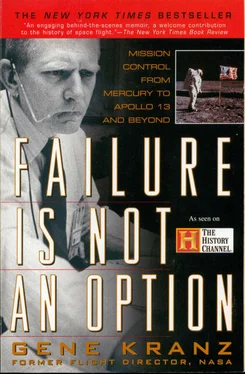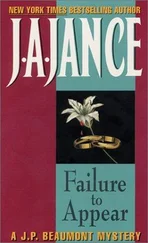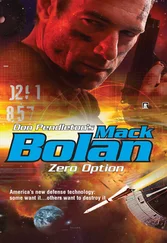On the final Apollo missions, a Jeep-like vehicle called the Lunar Rover extended the range of operations on the surface. The Rover had a television camera mounted on it, one that Ed Fendell and his team would control from 240,000 miles away to bring history into the homes and offices of the world. The first priority was to use that camera for studying the lunar surface. We could now see what the astronauts saw, close up and in real time. It was like being able to look over the shoulders of Lewis and Clark as they trekked into the great unknown of their era. Scott and Irwin would be the first humans to walk the vast and incredibly lonely Hadley-Apennine region. At the atomic test site, I could visualize what they would see, touch, and do.
Back at MCC, the challenge of the final three missions was emotional as much as technical. My controllers, average age now twenty-seven, were asking themselves, “What do you do after you have been to the Moon?” They had come to us at the beginning of Apollo, in their early twenties. Now, with NASA limiting the program to only three more missions, they were taking it the hardest. Mission Control was their portal to the stars; they believed we had taken only that first “giant step for mankind” and could not understand why we were not taking the next leap forward. I knew how they felt. When I won my wings, I believed I would fly fighters forever. When my dream ended, my world folded. So I had to pick myself up and get on with life, and find a new vision. In the process, I took a lucky fork in the road that got me first into flight testing and then into the space program. It was that one-in-a-million chance you take in life that pays off.
In 1971 a big part of my job was convincing my young controllers that there was a damned interesting and challenging world after Apollo. Together we would take the next fork in the road and blaze a path into the next era of space. I am a dreamer, believing that the mark of a champion is the ability to thrive in tough times. I was convinced that Mission Control would evolve, adapt, and exploit every opportunity. We can make the future ours if we believe and fight to make it happen.
Change was again in the wind. The high visibility of my controllers provided them with opportunities for top-level leadership roles. In 1970 Glynn Lunney had traveled with Robert Gilruth to Moscow to determine the degree of Russia’s interest in a joint space mission and the resources the Russians would make available for it. Now after Apollo 15, Lunney joined Hodge and Charlesworth in top management. While I lost extremely capable leaders, I had the opportunity to bring along another new generation of young leaders in the Mission Control “leadership lab.” Every young man or woman coming in at the bottom could take a shot at a flight director, division, or branch slot in the first ten years of their career.
* * *
In the final days of Apollo I was fortunate to be knee-deep in mission-ready leaders, most veterans of twenty or more space missions, including those of Gemini and Apollo. My only fear, with the constant juggling of priorities and people, was the loss of focus on the final three missions. I also knew that any major mission glitch would give those who were nervous about the risk an opportunity to argue that since the Moon had been reached there was no need for the remaining missions. I was glad the final flights would be led in Mission Control by three former aviators, who understood how to live with and manage risk. Maybe it was our fighter aircraft mentality, or maybe it was our confidence in the human factor, but flight directors Gerry Griffin, Pete Frank, and I believed the nation had sacrificed too much to surrender to the increasingly conservative national leadership. As we opened the era of extended lunar operations, we felt fully capable of meeting every challenge that we and our crews would face during the final missions.
To extend the range of the lunar expeditions, modifications had been made in the LM to provide stowage for the battery-powered, Jeep-like Rover. We shaved our mission rule margins and, with extra oxygen and batteries, we extended the surface duration to almost three days. Extravehicular activity was planned for each day the crew spent on the lunar surface.
The CSM also received a facelift. A full bay had been filled with instruments to map the lunar surface, study its physical environment, and investigate its gravitational and magnetic properties. The controllers and the new lunar orbital scientists learned from each other about the science and operations of space exploration, developing the rapport needed for successful missions.
Approaching the end of Apollo, my frustration often surfaced. No one in America seemed to care that we were giving up, surrendering the future of the next generation of young people with stars in their eyes. Often I sat silently, somewhat moodily in my office, rereading President Kennedy’s words, “The United States was not built by those who waited and rested and wished to look behind them. This country was conquered by those who moved forward, and so will space.” But what if we had not pushed ahead, exploring and opening the American frontier? What sort of nation would we have been? What were the implications for our decision not to push ahead now? How I wished John F. Kennedy were still alive, challenging us to dare and to dream. I feel the same way today; the boldness and scope of his vision is not to be found today in our space program and in our nation.
As the budgets tightened and public support waned, NASA was resigned to the cancellation of the Apollo 18 and 19 missions. The tough choices prompted “the grand old man” of lunar science, Harold Urey, to write in the Washington Post, “We wish to finish a job which has beautifully begun and now we get stingy. Because of the additional cost of 25 cents per year for each of us, we are dropping the final two flights to the Moon. How foolish and shortsighted from the view of history can we be?”
The final three missions were no easier than the earlier ones. The complexity of the spacecraft systems as well as the objectives for each mission made it unlikely that any mission would be trouble-free. In retrospect I am still amazed that we risked so much, so often, and came through unscathed again and again. At times, I believed Providence watched over us all.
Kraft was now preoccupied with the future and his inevitable promotion to MSC director. Seated in Kraft’s chair since Apollo 13 was Sig Sjoberg. In many ways, I felt vaguely uncomfortable without Kraft in charge, almost as if he were our bearer of good luck, our talisman in Mission Control.
Sig, invariably accompanied by Bill Tindall, was radically different from Kraft. He was accustomed to being the deputy, not the sheriff. I could get mad at Kraft, standing face-to-face, pounding out my position. Chris had a short fuse. His expression would change to the incredulous, then his face would turn red and he would invariably start with, “I don’t give a damn what you think!” Then he would lay out his position. But then Kraft would always listen. It was great having a boss who felt so emotional about the job, and was willing to engage in a brawl if needed to get to the best answer.
It was tough, almost impossible, to get mad at Sjoberg. He was just too nice. He reminded me of a grandfather with his grandchildren, always giving a kind word of encouragement. Only infrequently did he ever admonish his charges, and then quietly. When I first met Sig, at Langley, my family was growing. One day, he arrived at work and asked me out to his car. When he opened the trunk, I saw a large old tricycle, almost the size of a rickshaw. I had never seen one so large or sturdy. Sig said, “We don’t need it anymore. I would like your kids to have it.” This remarkable man had not only this sweetness of character but real depth and earnestness.
Читать дальше












